Comments / Questions (23)
![]() Christine Sherriffs wrote:
Christine Sherriffs wrote:
So in reading the other comments when doing the sleeve cap decrease it is suppose to be done every row, not every other row as is written in the pattern? I’m so sadly confused.
03.03.2020 - 03:19DROPS Design answered:
Dear Mrs Sherrifs, you will decrease at the beginning of every row (= both from RS and from WS), this means you will cast off on each side every other row. Happy knitting!
03.03.2020 - 09:56
![]() Christine Sherriffs wrote:
Christine Sherriffs wrote:
Hello. I am working on the sleeve decrease. For size small. Where it says dec 1 stitch 5 times is this done on either end every row or 1 stitch 5 times every other row? Thank you.
02.03.2020 - 19:15DROPS Design answered:
Hi Christine, Each decrease is at both ends of the row, so 1 stitch at each end x 5 (10 stitches decreased). Happy knitting!
03.03.2020 - 09:26
![]() Jan wrote:
Jan wrote:
Hi, I am going to make your cute sweater 69-21. I am reading the pattern instructions and cannot understand the 5 stitches that you put onto a stitch holder and what you do with them later during assembly. It says to knit in garter for 7+ inches and sew them to the body. I seem to be missing something. Do you have anymore detailed instructions for the assembly of the sweater. Thank you for your help.
28.02.2020 - 22:44DROPS Design answered:
Dear Jan, these stitches are first slip aside then worked back in garter stitch then sewn to the back/front piece for the edge. They are worked separately since tension is different in garter stitch and in pattern and that way your edge over these 5 stitches will be nicer. Happy knitting!
02.03.2020 - 09:04
![]() Marisa Flores wrote:
Marisa Flores wrote:
Hola!! El sombrero tiene en la parte superior un borde sobresaliente que no lo veo explicado, o no lo entiendo. También dice que aumente "hasta que la labor mida 9.5-10.5 cm desde el anillo" y luego "continuar hasta que la circunferencia sea de aprox 55-57 cm". No entiendo por qué hace llegar hasta 9.5 - 10.5 para después decir que siga igual hasta 55. Hay que hacer algo al llegar a 9.5-10.5? porque me queda una circunferencia de 55 y no tiene la misma forma que la foto
04.01.2019 - 22:04DROPS Design answered:
Hola Marisa. En el patrón dan dos medidas ( el largo de la labor desde el inicio y la circunferencia del gorro) que se mantienen siempre y cuando estés trabajando con la misma tensión del tejido que el patrón. Puede ser que alcances el largo de la labor pero no tengas la circunferencia del gorro necesaria. En este caso tienes que continuar con los aumentos. Al llegar a la medida de la circunferencia del gorro continúa sin aumentos.
17.10.2019 - 18:51
![]() Gudrun wrote:
Gudrun wrote:
Hej. Jag kan inte hitta beskrivningen till den snygga hatten.
06.12.2018 - 20:09DROPS Design answered:
Hei Gudrun. Her har tallene byttet plasse, hatten finner du på 69-10 her. Vi skal få rettet dette. God fornøyelse.
07.12.2018 - 10:11
![]() DROPS Design wrote:
DROPS Design wrote:
For Mrs Bowen: For sleeve cap, bind off at the beg of every row on each side: 2 sts 3-2 times, 1 st 5-11 times then cast off 2 sts at the beg of each row until piece measures 54-55 cm (depending on your tension you will have to work more or less rows, the number of sts cast off will depend on your tension in height, just make sure you cast off the same number of sts on each side and cast off the remaining sts. Happy knitting!
17.04.2018 - 09:03
![]() Jackie Bowen wrote:
Jackie Bowen wrote:
It says Drops 69-21 at the top; refer to my previous email sent; i’m hving trouble with the section after sleeve increases; the middle section on increasing leading to neckline and neckline—front says bo 12 while back says 22. Need # if sts we shld hv on each side after all decreases r done
16.04.2018 - 18:59DROPS Design answered:
Dear Mrs Bowen, for front piece, cast off for neck the middle 12 sts and continue each side separately casting off at the beg of each row from neck 2 sts 1 time and 1 st 5 times = 15 sts remain for shoulder. On back piece, cast off the middle 22 sts for neck and then continue each side separately casting off 2 sts at the beg of next row from neck = 15 sts remain. (to be continued under "comments").
17.04.2018 - 09:02
![]() Jackie Bowen wrote:
Jackie Bowen wrote:
I don’t understand these instructions: does not tell how many sts u end up with and do the decreases go every other row then u multiply the number of sts times the number given fir hiw many times? It’s confusing to me to follow as written
16.04.2018 - 00:47DROPS Design answered:
Dear Mrs Bowen, can you please let us know more? which size are you working, for which piece do you need help? Remember you can get any individual assistance from the store where you bought your yarn, even per mail or telephone. Happy knitting!
16.04.2018 - 10:04
![]() Heike Schneider wrote:
Heike Schneider wrote:
Liebes Strickteam, erstmal vielen Dank für die wunderbaren Anleitungen und die tollen Garne. Beim Abketten für den Armausschnitt schreibt ihr: 3 M 1-1-1 mal..... das habe ich noch verstanden.... also jede 2. Reihe 3mal 3 M abketten Weiter gehts dann mit 2 M total 2-4-5 Mal..... und hier verstehe ich nicht, was ich machen soll. Was bedeutet total und was die Wiederholungen? Vielen Dank für die Hilfe und herzliche Grüße Heike
04.07.2016 - 15:06DROPS Design answered:
Liebe Heike, die Angaben sind anders gemeint: Die Zahlen 1-1-1 Mal beziehen sich auf die verschiedenen Grössen. Sie ketten also in allen 3 Grössen zunächst beidseitig 1 x 3 M ab. Dann in Grösse S/M 2 x 2 M – in Grösse M/L 4 x 2 M etc.
06.07.2016 - 08:14
![]() Hanna wrote:
Hanna wrote:
Hur får jag tag i mönstret till hatten? (det står refererat till 10-69, men jag hittar inte den) Mvh Hanna
28.05.2016 - 10:12
DROPS 69-21 |
|
|
|
|
Airy DROPS jumper in "Ribbon" and crochet hat in "Muskat"
DROPS 69-21 |
|
|
Structured pattern: 1st row (= RS): P. 2nd row (= WS): *P 1, 1 YO *, repeat from *-*. 3rd row: *K 1, slip YO from previous row *, repeat from *-*. 4th row: K 5th row: * K 1, 1 YO *, repeat from *-*. 6th row: * P 1, slip YO from previous row *, repeat from *-*. Repeat 1st – 6th continuously upwards. Ridge (Back and forth on needle): 1 ridge of garter st = 2 rows. 1st row K, 2nd row K. Ridge (on circular needle): 1 ridge garter st = 2 rounds. 1st round P, 2nd round K. Knitting tip: Ribbon yarn has a tendency to twist whilst worked with, so it should be untwisted as you go for the best result. Knitting information: All measurements mentioned in this pattern should be taken when the piece is held up. This is because the pattern stretches when vertical. Front piece: Read the knitting tip and the knitting information! Cast on 76-82-90 sts on needle size 4.5 mm with beige pepper and work 3 ridges. Put 5 sts in each side on a thread (= slit sts, these 5 sts are worked in garter st at the end and are fastened to body) = 66-72-80 sts remaining on needle. Continue with structured pattern – see description above. Remember knitting tension! When piece measures approx. 20 cm inc 6 sts (incl 1 edge st) in each side above slit = 78-84-92 sts. Continue working structured pattern across all sts. When piece measures 52-54-55 cm cast off for armholes in each side every 2nd row: 3 sts 1-1-1 time, 2 sts 2-4-5 times, 1 st 4-3-4 times = 56-56-58 sts on needle. When piece measures 65-66-67 cm cast off the middle 12 sts for neck. Continue to cast off on each side of neck every 2nd row: 2 sts 1-1-1 time and 1 st 5-5-6 times. When piece measures 71-73-75 cm, work 1 ridge across all sts. Then cast off. Piece measures approx. 72-74-76 cm. Back piece: Cast on and work as for front piece. Cast off for armholes as for front piece and continue working until piece measures 70-72-74 cm. Now cast off middle 22-22-24 sts for neck. Continue by casting off 2 sts on next row towards neck. Cast off remaining 15 sts on each shoulder (after working 1 ridge across all the sts as for front piece) when piece measures 72-74-76 cm. Sleeves: Cast on 30-32-34 sts (incl 1 edge st in each side) on needle size 4.5 mm with beige pepper. Work 3 ridges, continue with structured pattern. When piece measures 9 cm inc in each side: 1 st 11-10-10 times every 3rd cm = 52-52-54 sts. When sleeve measures 44-42-40 cm cast off for sleeve cap in each side every 2nd row: 2 sts 3-2-1 times, 1 st 5-11-14 times, continue to cast off 2 sts until piece measures 54-55-55 cm. Cast off remaining sts. Assembly: Slit: Place the 5 sts on the one side of the front piece on needle size 4.5 mm. Work garter st upwards for approx. 20 cm (or equivalent to length of slit), cast off. Sew ridges to body – sew in outermost strand of outermost st. Repeat on other side of front piece and on each side of back piece. Neck: Sew right shoulder seams. Pick up approx. 75 - 80 sts round neck on needle size 4.5 mm with beige pepper. Work 2 ridges. Cast off. Sew left shoulder seams and along neck edge. Sew in sleeves. Sew sleeve and side seams in one – down to the slit – inside 1 edge st. ________________________________________ Crochet DROPS hat in Muskat Sizes: S/M - M/L Head measurements: 55 - 57 cm. Materials: DROPS Muskat from Garnstudio 200-200 g colour no 61, pale beige DROPS Crochet hook size 3 mm Crochet tension: 21 dc x 24 rows = 10 x 10 cm on hook size 3 mm. Remember hook size is only a guide! Lobster st: Crochet on RS dc the opposite way, in other words from left to right without turning piece. Crochet 1 st in every dc from previous round. Hat: Crochet 4 dc. Form them to a ring with 1 slip st. Crochet 1 ch. Crochet 6 dc in the ring, 1 ch. 1st round: Crochet 2 dc in every st = 12 dc, insert 1 marker thread at the beginning of the round. 2nd round: * 1 dc in the first st, 2 dc in the next st *, repeat from *-* to end of round = 18 dc. 3rd round: * 1 dc in the first 2 sts, 2 dc in next st *, repeat from *-* to end of round = 24 dc. 4th round: * 1 dc in the first 3 sts, 2 dc in the next st *, repeat from *-* to end of round = 30 dc. 5th round: * 1 dc in the first 4 sts, 2 dc in the next st *, repeat from *-* to end of round = 36 dc. Continue to inc 6 dc per round – in other words, you crochet 1 dc more between each inc until piece measures 9.5-10.5 cm from the middle (the circumference increases with approx. 2 cm every inc round – crochet until circumference = approx. 55-57 cm). Continue with dc without inc until piece measures approx.19-20 cm from middle. On the next round, work the following increase: * 2 dc, crochet 2 dc in next st *, repeat from *-* to end of round. Then work 22 rounds without inc = hat brim. Finally, work 1 round with lobster st – see description above – in the outermost row of dc. Cut thread and fasten. Assembly: Fold the "hat brim" (in other words the last 22 rounds) double to RS. Sew back st in double edge, inside 2 dc rounds towards edge. Work a small double edge (= rolling edge) at the top of the hat as follows: Where increase at the top of the hat finishes, make a fold on RS, sew back st through the two layers inside the 2 rounds of dc on each side, i.e. there are 4 rounds of dc in the double edge. |
|
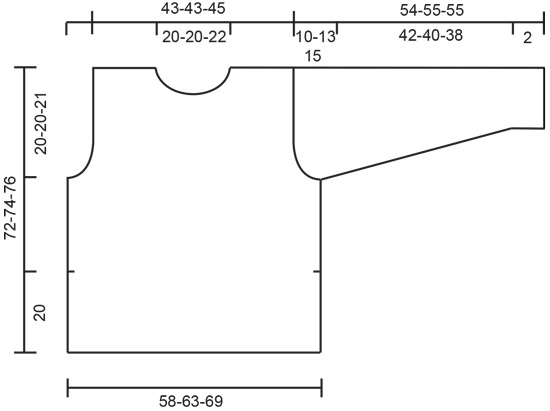 |
|
Have you finished this pattern?Tag your pictures with #dropspattern or submit them to the #dropsfan gallery. Do you need help with this pattern?You'll find 21 tutorial videos, a Comments/Questions area and more by visiting the pattern on garnstudio.com. © 1982-2025 DROPS Design A/S. We reserve all rights. This document, including all its sub-sections, has copyrights. Read more about what you can do with our patterns at the bottom of each pattern on our site. |


















































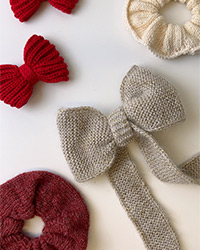
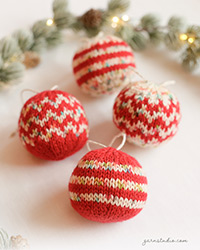

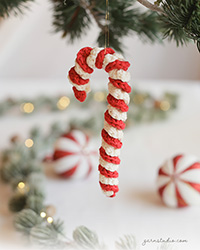

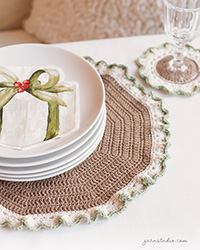
Post a comment to pattern DROPS 69-21
We would love to hear what you have to say about this pattern!
If you want to leave a question, please make sure you select the correct category in the form below, to speed up the answering process. Required fields are marked *.